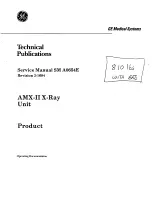
Hydraulics
The hydraulic system is under high pressure.
The machine's hydraulics has several functions,
which can cause injury to persons or damage to
the machine if operated incorrectly:
•
Escaping fluid may penetrate the skin.
•
Hydraulically supported machine parts may
drop.
•
Hydraulic components may be flung away.
Pressurised hydraulic hoses may whip about
when detaching them.
¾
Do not connect hydraulic hoses to the tractor
before both the hydraulics on machine and
tractor are de-pressurised.
¾
Lower all hydraulically lifted parts (e.g. wings,
packer, undercarriage, etc.) to the ground
before performing any work on the hydraulic
system. Depressurise the hydraulics on the
tractor and implement side.
¾
The hydraulic system is under high pressure.
Check all lines, hoses and screwed con-
nections regularly for leaks and any visible
external damage!
¾
Use only appropriate means when searching
for leaks. Repair any damage immediately!
Oil sprays can cause injuries and fire!
¾
Power sockets and connectors on the hydrau-
lic connections should be marked in order to
exclude operating errors.
¾
In the case of injury, contact a doctor imme-
diately!
¾
Secure and lock the control unit on the tractor
if not in use!
¾
Replace hydraulic hoses at the latest after six
years, see
Maintenance overview
.
Pressure accumulator
The hydraulic system is equipped with pressure
accumulators.
Observe the regulations applying at the location
of use during operation. The owner is solely
responsible for complying with them.
¾
Do not open or work (welding, soldering, drill-
ing) on pressure accumulators. Even when
empty, the tanks are still preloaded by gas
pressure.
¾
Maintenance and repair work on the pres-
sure accumulator must only be carried out by
trained and qualified personnel.
Brake system
Depending on the equipment, the machines can
be equipped with a pneumatically or hydrauli
-
cally operated service brake system.
For road travel the brake system must always
be connected and fully functional.
¾
After coupling the machine and before trans-
portation you should always check the func-
tion and condition of the brake system.
¾
Check the setting on the brake pressure
regulator.
¾
Always release the parking brake before start-
ing to drive.
¾
Always secure the machine against rolling
away and apply the parking brake before
unhitching.
Adjustments and repair work on the brake sys-
tem must only be carried out in a professional
workshop or by an operator, who has been
specially trained by HORSCH for this purpose.
Overhead lines
When unfolding or folding the wings, the ma-
chine may reach the height of overhead lines.
Possible voltage flashover to the machine may
cause fatal electric shock or fire.
¾
Keep a safe distance to electric high voltage
power lines with the wings folded and when
unfolding or folding the wings.
¾
Do not unfold or fold the wings in the vicinity
of pylons and power lines.
¾
Never leave or access the machine under
overhead lines to avoid possible risks of
electric shock or voltage flashover.
10
Summary of Contents for Pronto 3 - 6 DC
Page 2: ......
Page 5: ......
Page 20: ...Keep sufficient safety distance to the slewing range of the machine 00381117 16 ...
Page 128: ......















































